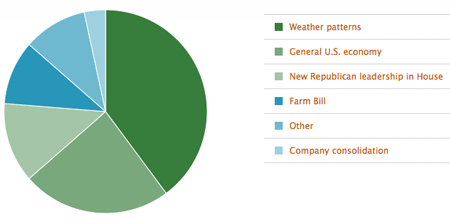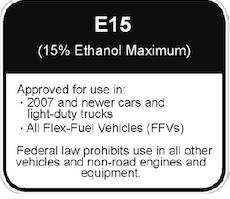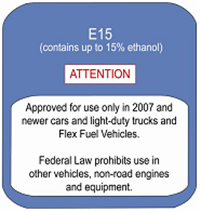I’m feeling a bit nostalgic this first week of 2011 for the days of affordable energy prices, environmentalists who still understood change for the greater good and for a biofuels industry that not only got along but were actually friends.
We’re only four days into the new year and some energy economists have declared that $3.00 per gallon gas prices are the new low and only going up – we’ll never see them lower again.
 Not only are Gas prices going up but energy prices as well – heating oil costs on the East Coast and natural gas costs in the Midwest. Coal is also getting more expensive.
Not only are Gas prices going up but energy prices as well – heating oil costs on the East Coast and natural gas costs in the Midwest. Coal is also getting more expensive.
Yet while we lament about high energy costs, we downright howl over the higher costs of alternative energy and try to push today’s development aside for future progress and cost competitiveness.
Let’s talk about cost parity for a moment. Those opposed to ethanol often cite the cost per gallon is not competitive with gasoline without subsidies unless the price of a gallon of oil reaches a certain point. Hey people – we’re nearing that point and we’ll soon hold steady and never look back.
Several things will happen when the cost of a barrel of oil averages $150 – proof we’ve already seen – America’s energy-based economy begins to collapse. A domestic and global recession ensues. People lose jobs. People lose houses. People can’t afford to pay their energy bills or their food bills.
Yet another thing happens at this point – cost parity. Without subsidies and incentives, and with the advancements in technologies, we suddenly have the ability for domestically produced affordable energy. But we’ll never have this future if we don’t continue to develop alternative energy today.
Yeah, yeah…I know that NO energy source is perfect. Read More



 “Our partnership with Praj represents a transformational initiative for Qteros,” said John A. McCarthy, Jr., President and Chief Executive Officer of
“Our partnership with Praj represents a transformational initiative for Qteros,” said John A. McCarthy, Jr., President and Chief Executive Officer of  Pramod Chaudhari, Founder and Executive Chairman of
Pramod Chaudhari, Founder and Executive Chairman of 



 Environmental Watch List of 2011. The 10 environmental hot topics range from issues like oil spills and offshore drilling to breakthroughs in wind and solar energy and the military’s increased use of renewable energy. The full report evaluates 10 judicial, legislative and other actions that the top-ranked law school considers to significantly affects humans and the natural world.
Environmental Watch List of 2011. The 10 environmental hot topics range from issues like oil spills and offshore drilling to breakthroughs in wind and solar energy and the military’s increased use of renewable energy. The full report evaluates 10 judicial, legislative and other actions that the top-ranked law school considers to significantly affects humans and the natural world. The letter continued, “The label shortcomings include leading, unscientific statements, confusing technical information and unwarranted warnings. The label as written will seriously impair long-term progress towards achieving the country’s stated goals for renewable fuels. It unnecessarily will promote skepticism and concern over any future broader approval for E15 and create the false perception that E15 is an inferior fuel.”
The letter continued, “The label shortcomings include leading, unscientific statements, confusing technical information and unwarranted warnings. The label as written will seriously impair long-term progress towards achieving the country’s stated goals for renewable fuels. It unnecessarily will promote skepticism and concern over any future broader approval for E15 and create the false perception that E15 is an inferior fuel.” Growth Energy, the organization that officially filed the E15 waiver back in 2009 also submitted an alternative E15 label for consideration today (blue label). In their letter to the EPA, the organization said, “Growth Energy supports label content and design that provides information to consumers necessary for an informed fuel choice. Growth Energy believes the label should be simple and informative and should state at the top “E-15 (contains up to 15% ethanol).” Further, the label should provide that E-15 is “approved for use only in 2007 and newer cars, light–duty trucks, and Flex Fuel Vehicles.” Finally, the label should provide “Federal law prohibits use in other vehicles, non-road engines and equipment.”
Growth Energy, the organization that officially filed the E15 waiver back in 2009 also submitted an alternative E15 label for consideration today (blue label). In their letter to the EPA, the organization said, “Growth Energy supports label content and design that provides information to consumers necessary for an informed fuel choice. Growth Energy believes the label should be simple and informative and should state at the top “E-15 (contains up to 15% ethanol).” Further, the label should provide that E-15 is “approved for use only in 2007 and newer cars, light–duty trucks, and Flex Fuel Vehicles.” Finally, the label should provide “Federal law prohibits use in other vehicles, non-road engines and equipment.”